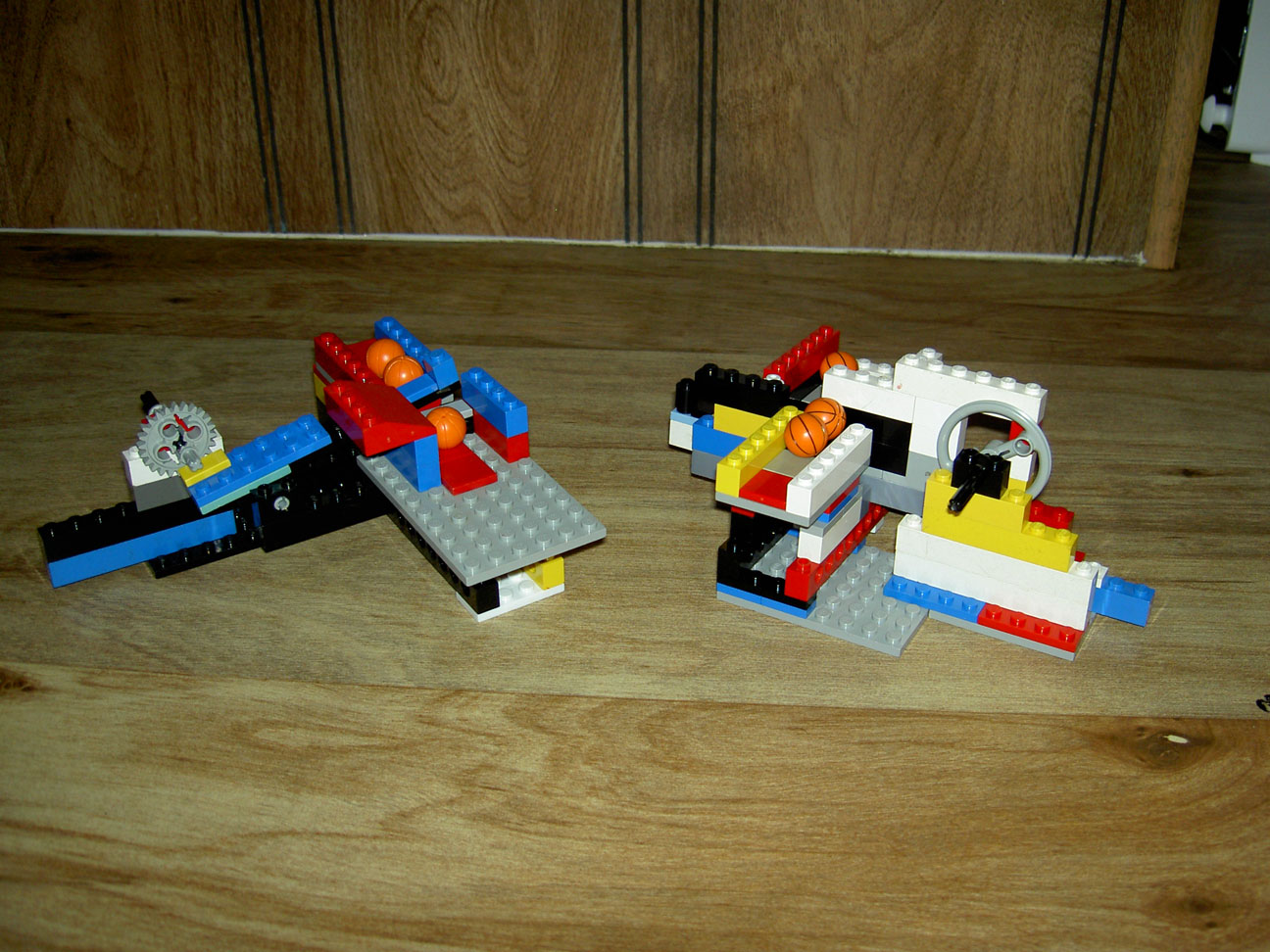Great Ball Contraption
A couple months before the August 2005 Brickfest in Virginia, a couple
friends and I got together weekly for a couple hours to make an entry
for the Great Ball Contraption event. We didn't actually plan to
go,
since it was on the other side of the country. But the goal to
make an
entry gave us a common focus. We came up with maybe 100 ideas for
cool
things to do that involved moving Lego basketball and soccer balls to
and fro. Substituting marbles for the soccer balls we didn't
have, we
soon found out that 90% of our ideas were fantasy when compared with
our ability to control the marbles' behavior and the limitations of the
Lego
pieces. Make that 95%. Still, we made a number of proof of
concept
models and eventually got one fully assembled module that successfully
transported about 80% of the marbles through from input to
output.
This mostly-working module was first operational about 1 day before
Brickfest.
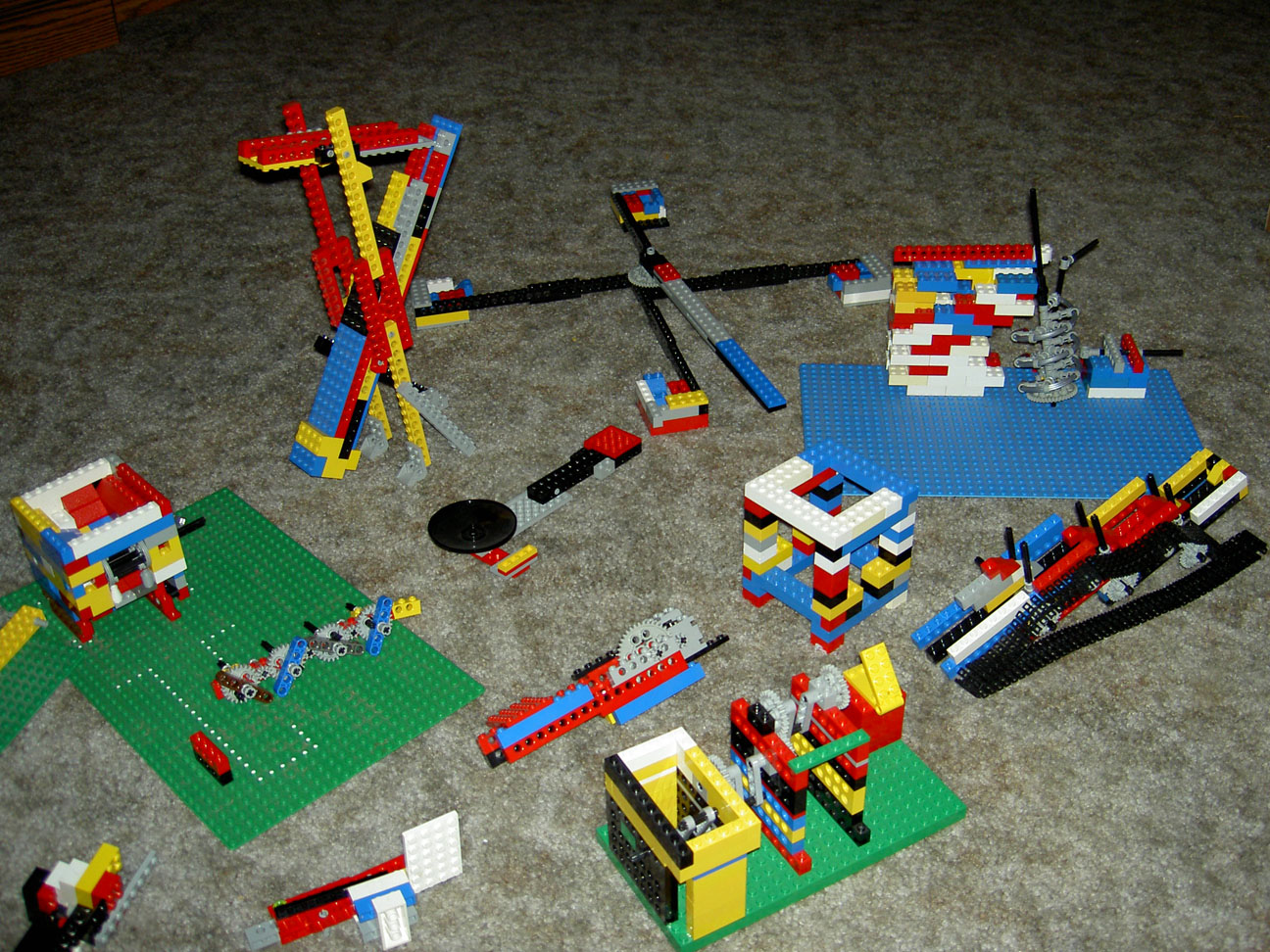
We experienced two major difficulties: creating a stream of marbles
from a batch, and raising the marbles.
No matter what physical shape we made the box or ramp or whatever you
want to call it, there was always SOME configuration where multiple
marbles could (and would) get jammed together, stopping the stream of
marbles leaving the box. One way out of that is to assume that
marbles
arrive at the input bin one at a time. Not very flexible, but
possible. The other way out is to stir the marbles such that they
can't stay in a jammed configuration. An agitator. We
thought we could get away with passive marble manipulation. We
didn't use an
agitator; consequently we became agitated.
The other difficulty was raising the marbles. Gravity helps them
roll
down just fine, thank you very much. Greg made a very cool
mechanism
that moved kind of like a magician rolling a quarter over his
fingers.
The rotating elements seemed to almost go through each other. The
marbles got passed from one rotator to the next. There were 4
rotators, limited by the number of one particular part.
Unfortunately,
it was a very tempermental mechanism. Another way to make things
go up
is by chain. Lego makes chain, but the connections are weak and
there
is little way to connect pieces to the chain. There are many
other
methods of raising things. The method we used on the 'working'
module
was a ferris wheel. The mechanism to feed a single marble into
the
cage as it came by mostly worked, but also was a little
tempermental.
When the cage reached the top, the marble rolled out onto a ramp.
That
description makes it sound like a nice, smooth, reliable process.
Hardly! It was more like the marble fell out of the cage at an
angle,
dropped a couple inches, and bounced onto (and sometimes off of) the
ramp.
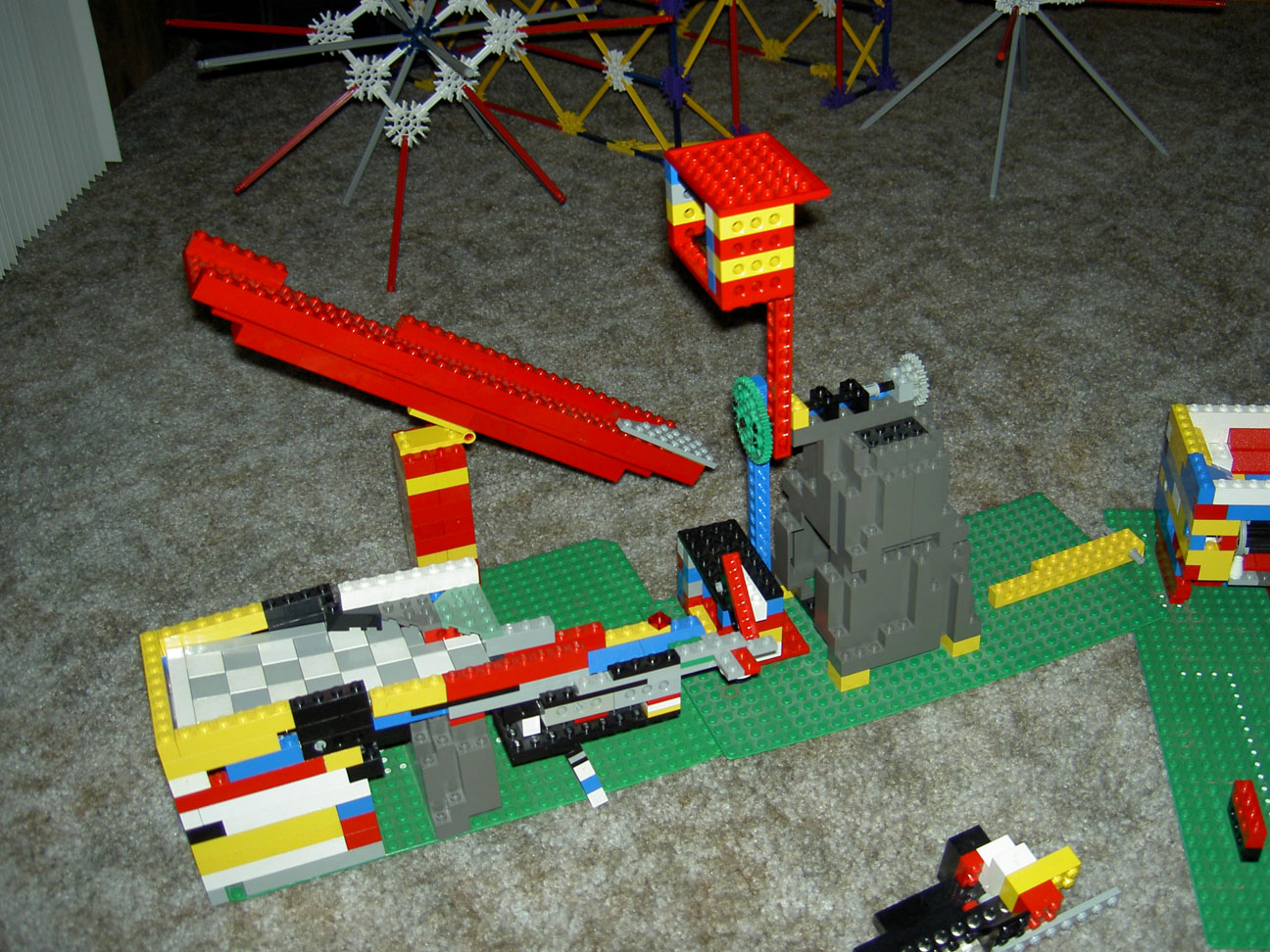
A year came and went. 'Round about middle of August 2006, I found
a
good deal on a couple thousand pieces at a garage sale ($5 !!!), and
while sorting through them got the bug. The previous year we made
some
models that threatened to work, but never actually did. This time
I
was able to work out a pump idea, that raised the balls a few
inches.

Ball Pump Movie (7 MB)
A week later, I figured out a kicker; it can raise the balls a foot or
more. You'll notice the tower is mostly Duplo blocks: they are
bigger and make quick work of a tower.
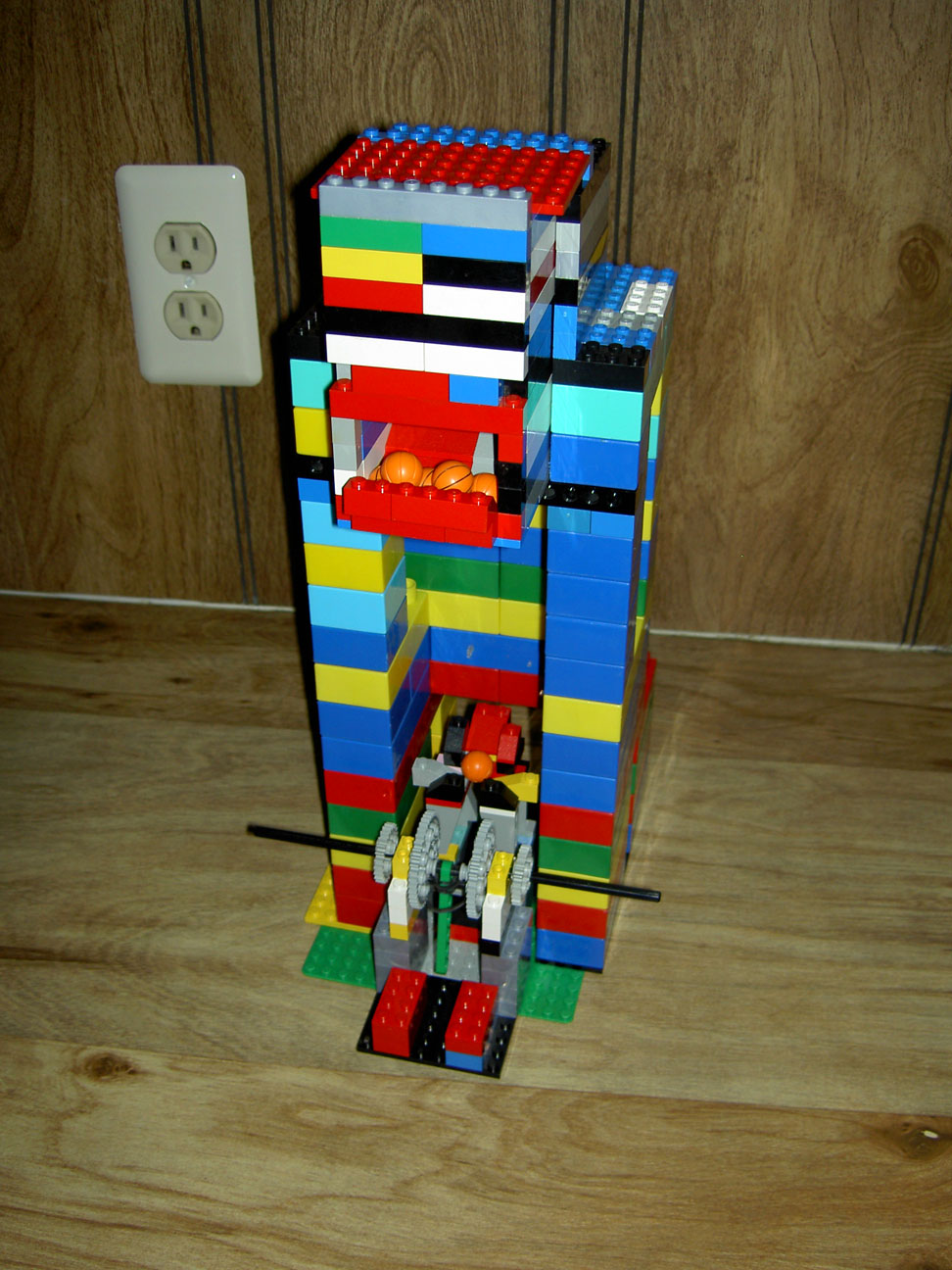
Then I needed to feed the kicker with one ball at a time, so I
made a couple gate mechanisms that operate from rotation, so they
require no special contraptions.
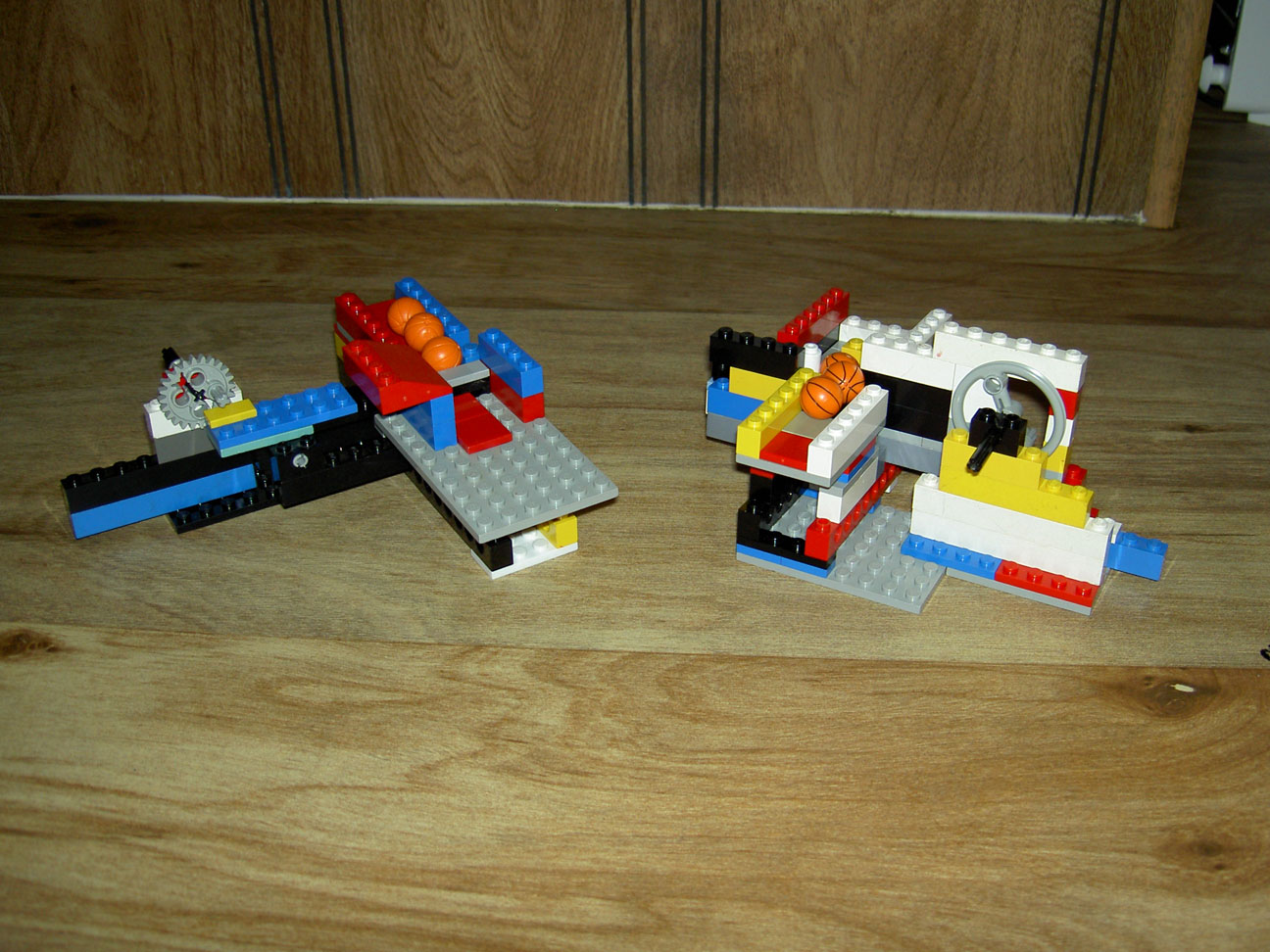
At the time I write this, it is the
end of August 2006, and I have just finished the gate mechanisms.
I
have not yet connected the gates to the kicker.
I want to make an input bin with an agitator, so I can connect
all these pieces into one module.
